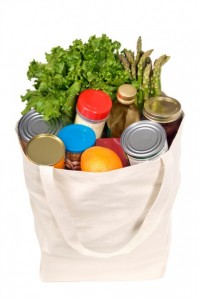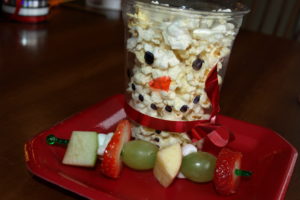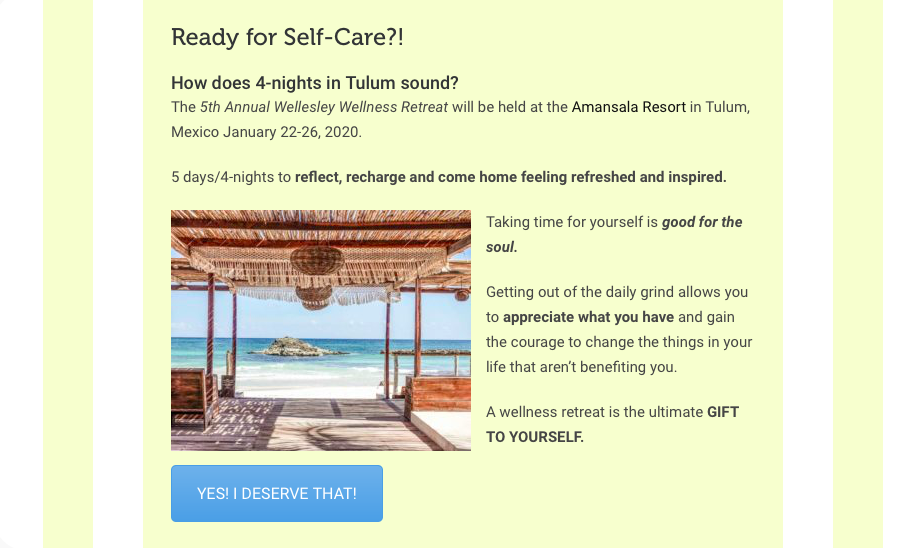The Season of Giving: Making Healthy Food Bank Donations
Eating well is a crucial component to living well.
I have talked about the importance of cutting out processed foods, choosing certain organic fruits and vegetables, participating in Meatless Mondays, and educating yourself about what you put into your body.
These are all important topics but really seem irrelevant when you think of the 50 million Americans who may not know where they will find their next meal. When you are hungry, healthy foods are not at the top of the priority list.
Since we are officially in the season of giving, I thought it was a great time to emphasize how you can help those in need right in your own community – in a healthy way!
I have gotten 4 different requests in the past few weeks from various organizations who are hosting food drives to collect food for our local Food Bank. Since the food collected from these organizations all goes to the same food bank, there wasn’t the need to donate to all 4, but I wanted to make sure that what we did donate was healthy.
{In case you aren’t familiar with the process – local food banks collect the food and distribute to various food pantries, soup kitchens and shelters throughout the community. These are often at churches, non-profits, or in a mobile pantry where people can come pick up the food they need at designated times.}
Often people (I am guilty!) donate whatever they don’t want in their cabinets. While the food banks (and people they serve) appreciate anything donated – why not donate healthy things you do eat?
You can contact your local food bank to find the most needed items. Mine had the items listed on their website. This actually is more important that trying to get healthy items – you want to make sure what you donate is needed and used.
Here are a few recommended items from a few of the food groups.
- Canned fruits – in 100% juice (not syrup) and no sugar added
- Shelf-stable fruit cups – in 100% juice (mandarin oranges are a favorite with kids)
- Fruit juices – 100% juice only
- Canned vegetables – look for low sodium or no salt added
- Tomato & spaghetti sauces
- Vegetables juices
- Dried fruit – check the ingredients to make sure no sugar added
Proteins
- Peanut butter (when in doubt go with this – it is always a popular item)
- Tuna or salmon – packaged in water or olive oil
- Beans – dried or canned (no-salt added)
- Unsalted Nuts -peanuts, almonds, walnuts
- Seeds – sunflower, sesame, pumpkin, flax, chia
Grains
- Oatmeal
- Whole grain crackers (Triscuits are great – only 3 ingredients!)
- Whole wheat pasta
- Whole grain rice –quinoa, wild rice, brown rice
- Low sugar, high fiber, whole grain cereals (Popular: Cheerios, Raisin Bran)
- Macaroni and cheese is always popular, but instead of Kraft, try Annie’s for a healthier version
Baking/Cooking Items
- Extra virgin olive oil
- Dried herbs and spices
- Flour (white whole wheat flour is a healthy option)
- Corn flour, rice flour, almond meal (gluten-free options)
Once again, it really depends on what the clients at your food bank are using. I called our food bank to check on the response to healthier options. Flax seed may be popular in some communities, but none mine. However, whole-wheat pastas, whole grain rice, whole-wheat cereals are all popular whether they are whole grain or not.
So, instead of cleaning out your pantry or buying the cheapest can on the grocery shelves, maybe this year you can try to donate healthier items.
If you don’t have the time to buy food to donate this year, monetary donations are always helpful. This time of year they typically solicit food only, but cash does allow the food banks to buy in bulk and buy what they need. You can donate through Feeding America or you can find your local food bank here.
I hope that if you do decide to donate food this giving season (or anytime!), you will think about purchasing healthy food items.
Everyone deserves a chance to eat well and live well!!
Love,
Molly






